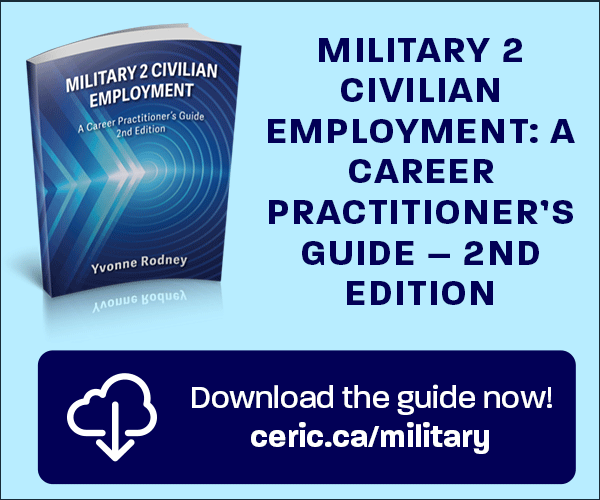A Second Apprenticeship: The Career Transition of Trades Teachers.
Keywords:
career transition, apprenticeshipAbstract
The concept of career has changed with time to include not a singular path from adolescence through to retirement (Holland, 1985; Super, 1957) but hanging paths, second careers, and recycling or repeating of earlier career stages in midlife (Super, 1990). Within education, research has looked at career changes leading to elementary and secondary teaching (e.g., Castro & Bauml, 2009; Eifler & Potthoff, 1998; Swain, Schmertzing & Schmertzing; 2011; tigchelaar, Brouwer & Korthagen, 2008); however, there has been relatively little attention to post-secondary education and, particularly, vocational-technicall education.
References
Arreola, R.A. (2007). Developing a comprehensive faculty evaluation system. San Francisco, CA: Jossey-Bass.
Berger, J., & D’Ascoli, Y. (2012). Becoming a VET teacher as a second career: investigating the determinants of career choice and their relation to perceptions about prior occupation. Asia-Pacific Journal of Teacher Education, 40(3), 317-341. doi:10.1080/1359866X.2012.700046
Campbell, S.J. (2009). A survey of community college faculty, their teaching methodologies, and congruence with student learning needs (Doctoral dissertation). Walden University, Minneapolis, MN.
Castro, A.J., & Bauml, M. (2009). Why now? Factors associated with choosing teaching as a second career and their implications for teacher education programs. Teacher Education Quarterly, 36 (3), 113-126. Retrieved from: http://www.jstor.org/stable/23479192
Concise Canadian Oxford Dictionary. (2005). Don Mills, Canada: Oxford University Press.
Creswell, J. W., & Plano Clark, V.L. (2011). Designing and conducting mixed methods research. Thousand Oaks, CA: Sage Publications.
Dainty, J. (2012). Predicting factors of secondary career and technical education teachers’ intent to stay in the profession (Doctoral dissertation). University of Arkansas, Fayetteville, AR.
Darling-Hammond, L. (2012). Creating a comprehensive system for evaluating and supporting effective teaching. Stanford, CA: Stanford Center for Opportunity Policy in Education.
Denzin, N. K. & Lincoln, Y. S. (2005). Introduction: The discipline and practice of qualitative research. In N.K. Denzin & Y. S. Lincoln (Eds.), The Sage Handbook of Qualitative Research, (pp. 1–32). Thousand Oaks, CA, Sage Publications.
Eifler, K., & Potthoff, D.E. (1998). Nontraditional teacher education students: a synthesis of the literature. Journal of Teacher Education. 49(3), 187-195. doi:10.1177/0022487198049003004
Erikson, E. (1980). Identity and the life cycle. New York, NY: W.W. Norton and Company.
Frels, R.K., & Onwuegbuzie. A.J. (2013). Administering quantitative instruments with qualitative interviews: A mixed research approach. Journal of Counseling & Development, 91(2), 184- 194. doi: 10.1002/j.1556-6676.2013.00085.x
Goldhaber, D. (2002). The mystery of good teaching. Education Next, 2(1), 50- 55. ProQuest document ID: 1237764529
Graves, B. (1989). Informal aspects of apprenticeship in selected American occupations. In M. W. Coy (Ed.), Apprenticeship: From theory to method and back again
(pp 51-64). Albany, NY: State University of New York Press.
Holland, J.L. (1985). Making vocational choices: A theory of vocational personalities and work environments. Englewood Cliffs, NJ: Prentice-Hall.
Hong, J.Y. (2010). Pre-service and beginning teachers’ professional identity and its relation to dropping out of the profession. Teaching and Teacher Education, 26, 1530-1543. doi: 10.1016/j.tate.2010.06.003
Korthagen, F.A.J. (2004). In search of the essence of a good teacher: towards a more holistic approach in teacher education. Teaching and Teacher Education,
, 77-97. doi: 10.1016/j.tate.2003.10.002
Lamont, M. (2000). The dignity of working men: Morality and the boundaries of race, class, and immigration. Cambridge, MA: Harvard University Press.
Lamont, M., & Molnar, V. (2002). The study of boundaries in the social sciences. Annual Review of Sociology. 28: 167- 195. doi: 10.1146/annurev.soc.28.110601.141107
Landy, F.J. & Conte, J.M. (2007). Work in the 21st Century: An introduction to industrial and organizational psychology. Malden, MA: Blackwell Publishing.
Lefebvre, R., Simonova, E., & Wang, L. (2012). Labour shortages in skilled trades – The best guestimate? Ottawa, Canada: Certified General Accountants Association
of Canada.
Lubrano, A. (2004). Limbo: Blue-collar roots, white-collar dreams. Hoboken, NJ:
John Wiley. Marcia, J. E. (1980). Identity in adolescence. In J. Adelson (Ed.), Handbook of adolescent psychology (pp. 158- 187). New York, NY: Wiley.
Noonan, B. (2002). Interpretation panels and collaborative research. Brock Education, 12(1), 89-100.
Rockoff, J. E., & Speroni, C. (2011). Subjective and objective evaluations of teacher effectiveness: Evidence from New York City. Labour Economics 18, 687–696. doi: 10.1016/j.labeco.2011.02.004
Ruhland, S. K., (2001, December 16). Factors influencing the turnover and retention of Minnesota’s secondary career and technical education teachers. Presented at
the Annual Meeting of the Association for Career and Technical Education, New Orleans, LA.
Ryan, J., & Sackrey, C. (Eds.) (1996). Strangers in paradise: Academics from the working class. Boston, MA: South End Press.
Schulman, L. (1986). Those who understand: Knowledge growth in teaching. Educational Researcher, 15(2), 4-14. :10.3102/0013189X015002004
Simmons, T.M. (2009). The Preparing Future Faculty (PFF) program: Examining relationships and regressions among professional identity, career expectations, and
teaching efficacy (Doctoral dissertation). Howard University, Washington, DC.
Simpson, I.H. (1967). Patterns of socialization into professions: the case of student nurses. Sociological Inquiry, 37(1), 47-54. doi:10.1111/j.1475-682X.1967.tb00637.x
Swain, G., Schmertzing, L., & Schmertzing, R. (2011). A qualitative investigation of the impact of early-career experience on teachers with alternative certification. Delta Kappa Gamma Bulletin, 77(4), 59-66. Retrieved from http://search.proquest.com.cyber.usask.ca/docview/905838568
Super, D.E. (1957). The psychology of careers: An introduction to vocational development. New York, NY: Harper.
Super, D.E. (1990). A life span, life-space approach to career development. In D. Brown, & L. Brooks (Eds.) Career choice and development (pp.197-261). San Francisco:
Jossey-Bass.
Tigchelaar, A., Brouwer, N., & Korthagen, F. (2008). Crossing horizons: Continuity and change during second-career teachers’ entry into teaching. Teaching and Teacher Education, 24, 1130-1550. doi:10.1016/j.tate.2008.03.001
Volmari, K., Helakorpi, S., & Frimodt, R. (2009). Competence framework for VET professions: Handbook for practitioners. Sastamala, Finland: Finnish National Board
of Education.
Watt, H.M.G., & Richardson, P.W. (2007). Motivational factors influencing teaching as a career choice: Development and validation of the FIT-Choice scale. Journal of Experimental Education, 75, 167–202. doi:10.3200/JEXE.75.3.167-202

Downloads
Published
How to Cite
Issue
Section
License

This work is licensed under a Creative Commons Attribution-NonCommercial-NoDerivatives 4.0 International License.
















